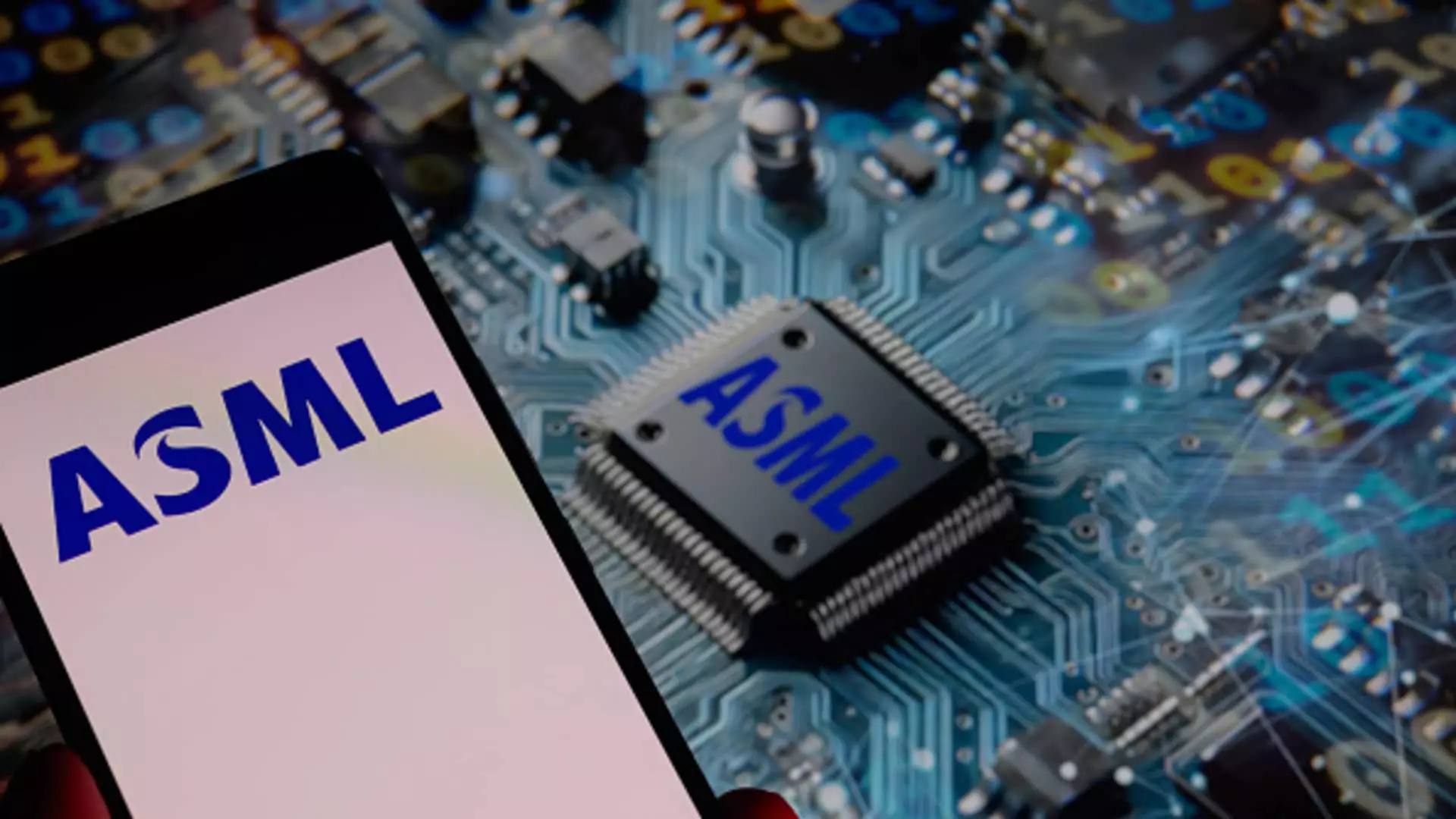The semiconductor industry has become a battleground marked by geopolitical tensions and economic uncertainty, and at its center lies ASML, a company once considered a titan of technological prowess. In the last year, more than $130 billion has evaporated from ASML’s market capitalization, sending shockwaves through the sector. From a staggering peak of over 1,000 euros per share, the company now grapples with shares plummeting toward the 300 euro mark. Such a dramatic decline is not merely a financial statistic; it illustrates the fragility of the global semiconductor supply chain, one that ASML has been instrumental in building.
ASML’s journey reflects broader trends that have engulfed the industry. The U.S. government’s stringent restrictions on exports to China have cast a shadow over potential sales opportunities, particularly since cutting-edge technology like extreme ultraviolet (EUV) lithography remains barred from Chinese dominion. ASML is essentially a gatekeeper—controlling technology that is crucial for producing the world’s leading-edge chips—yet political friction seems dedicated to stifling its potential.
The Price of Dependence
The economic ramifications of U.S. trade policies extend far beyond ASML itself. When tariffs were first floated under the Trump administration, they sent ripples through the semiconductor supply chain that have yet to settle. Companies reliant on ASML’s innovations, such as TSMC and Samsung, are now caught in a tightening vise of uncertainty, stifling both investment and consumer confidence. Analysts warn of an alarming over-investment in artificial intelligence, urging re-evaluation of demand projections. In a rapidly evolving landscape, the fear that the anticipated chip demand is grossly inflated could lead to another disappointing wave of market corrections.
Stephane Houri from ODDO BHF highlights this precarious situation, underscoring how the avoidance of clear tariffs discussions has created an atmosphere of trepidation. Investors are left in the lurch, amplifying volatility amongst semiconductor stocks. In this cauldron of confusion, ASML stands as both the victim and the harbinger of a faltering technological renaissance.
A Unique Position and Future Prospects
Despite the pressures surrounding it, ASML occupies an unrivaled niche. Its monopoly on EUV technology gives it an advantage that few in the sector possess. Recently commencing shipments of next-generation high numerical aperture machines, ASML’s innovative edge could provide a counterweight to the adversities it faces, albeit with significant limitations imposed on export potential to the Chinese market. CEO Christophe Fouquet’s prediction that reliance on the Chinese market will diminish by 2025 signals a broader trend of decoupling between the U.S. and China. This anticipated pivot does little to assuage investor fears; rather, it requires a recalibration of ASML’s business strategy to focus on burgeoning markets in Europe and beyond.
One has to wonder: Is the company’s brilliance in technological innovation enough to safeguard it from the headwinds of international politics? Speculative optimism remains, evidenced by analysts projecting a rebound to around 779 euros per share. Such projections highlight a stubborn belief in ASML’s ability to bounce back, drawing attention to other industry players, like Intel, showing commitment to next-gen chipmaking. Nevertheless, such positivity is predicated on conditions that are anything but stable.
The Broader Implications
ASML’s struggles encapsulate deeper dilemmas within global trade and technology. As nations vie for technological supremacy, issues of intellectual property, tariffs, and market access become all-consuming. The semiconductor industry, which is foundational to technological advancement, is now wedged between national interests and corporate ambition. The reality is painfully clear: policies grounded in national security fears may ultimately stifle the very innovation that fuels economic growth.
This presents a complex narrative—one where ASML symbolizes both opportunity and vulnerability. As the world’s only manufacturer of EUV machines, the company arguably holds more power than many realize. However, without a robust dialogue among nations to address these pressing issues, the tides of uncertainty may continue to erode ASML’s status, leaving it exposed as a casualty of a conflict-driven market.
ASML stands at a crossroads, and the decisions made today will define the trajectory of this colossus, potentially reshaping the entire semiconductor landscape for years to come. The question remains: Can ASML, a linchpin of innovation, navigate these turbulent waters, or will it succumb to the swirling currents of geopolitical strife? That remains to be seen in an industry predicated on speed, precision, and, increasingly, survival in a hostile world.


Leave a Reply